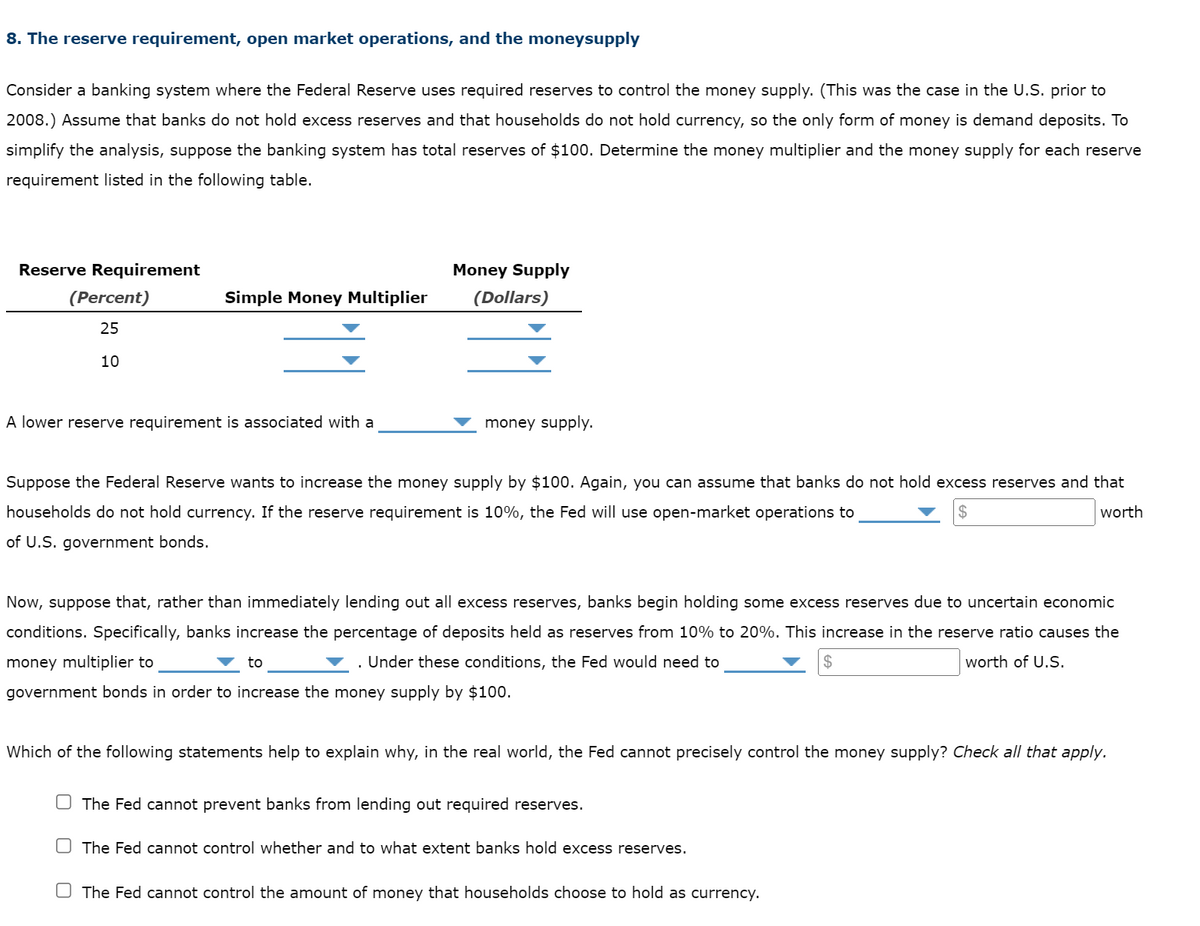8. The reserve requirement, open market operations, and the moneysupply Consider a banking system where the Federal Reserve uses required reserves to control the money supply. (This was the case in the U.S. prior to 2008.) Assume that banks do not hold excess reserves and that households do not hold currency, so the only form of money is demand deposits. To simplify the analysis, suppose the banking system has total reserves of $100. Determine the money multiplier and the money supply for each reserve requirement listed in the following table. Reserve Requirement Money Supply (Percent) Simple Money Multiplier (Dollars) 25 10 A lower reserve requirement is associated with a money supply. Suppose the Federal Reserve wants to increase the money supply by $100. Again, you can assume that banks do not hold excess reserves and that households do not hold currency. If the reserve requirement is 10%, the Fed will use open-market operations to worth of U.S. government bonds. Now, suppose that, rather than immediately lending out all excess reserves, banks begin holding some excess reserves due to uncertain economic conditions. Specifically, banks increase the percentage of deposits held as reserves from 10% to 20%. This increase in the reserve ratio causes the money multiplier to v to v . Under these conditions, the Fed would need to worth of U.S. government bonds in order to increase the money supply by $100. Which of the following statements help to explain why, in the real world, the Fed cannot precisely control the money supply? Check all that apply. O The Fed cannot prevent banks from lending out required reserves. O The Fed cannot control whether and to what extent banks hold excess reserves. O The Fed cannot control the amount of money that households choose to hold as currency.

"Since you have asked a question with multiple sub-parts, we will solve first three sub-parts for you .. If you want other sub-parts to be solved, Please repost question by specifying the number of the sub-parts"
In an economy, required reserve ratio is the ratio of total reserves that banks are mandated to keep aside from their total reserves so that they can use it in case of emergency withdrawals. This ratio is set by the central bank of a nation.
Trending now
This is a popular solution!
Step by step
Solved in 2 steps

Now, suppose that, rather than immediately lending out all
worth of U.S. government bonds in order to increase the money supply by $100.








